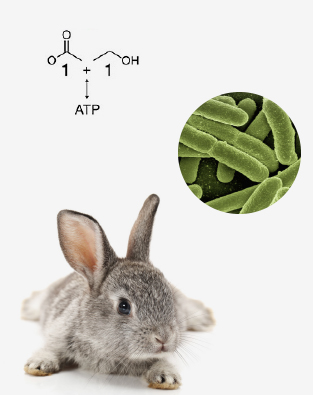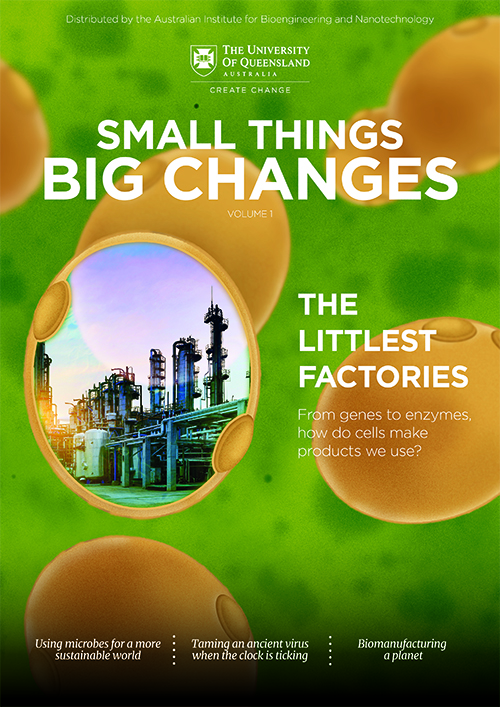Acetogens to the rescue
Could the oldest living microorganisms help us fight climate change?
In 2019, atmospheric carbon dioxide (CO2) surpassed 415 ppm (parts per million), a level not seen since the Pliocene era, around three to five million years ago.
CO2 is not only very good at trapping heat in the atmosphere, it also lingers there for a very long time. The majority of CO2 remains in the atmosphere for up to a century, while the remainder can take millennia to be recycled. According to future climate models, we just don’t have that kind of time.
To reduce CO2 levels and keep global temperatures in check, many climate scientists argue that not only do we need to achieve net-zero CO2 emissions as soon as possible, we will also need to achieve negative CO2 emissions in the near future. In other words, it’s not enough to stop releasing CO2, it must be actively removed from the atmosphere.
“The world has a big problem with rising greenhouse gas emissions,” says Professor Esteban Marcellin at UQ’s AIBN. “We need to make the same chemicals and fuels in a more sustainable way, and biomanufacturing can contribute to that.”
Indeed, microbes have been critical to the global carbon cycle since the emergence of life on Earth. Back then, the atmosphere was very different from what we breathe today; at that time, it was a reducing atmosphere of noxious gases which would be toxic to most life on our planet now. When single-celled life first emerged, organisms that could convert those gases into the building blocks of life had a distinct advantage.
Definitions
Carbon Capture
Plants have a CO2 capture efficiency of only around 1% to 2%. This is why many, many plants are needed for a healthy carbon cycle and why large-scale forest clearcutting in recent centuries has contributed to rising CO2 levels in the atmosphere.
Carbon Fixation
Green plants use photosynthesis to convert atmospheric CO2 into sugars and other nutrients. A variety of microbial species can also capture and ‘fix’ CO2. Some use photosynthesis, while others use different chemical pathways to achieve this.
In particular, microbes called acetogens flourished under these conditions. Over aeons, they developed molecular machinery to build larger carbon chains from CO2 and CO (carbon monoxide) and use the carbon for growth. Luckily for us, they’re still here.
“Acetogens are one of the oldest living microorganisms on the planet and are speculated to have the same molecular pathways that resulted in the emergence of life,” says Professor Marcellin.
“Today, acetogens fix around 20% of the carbon in the atmosphere, making them a major player in the global carbon cycle.”
There is now increasing interest in using acetogen cultures to help mop up greenhouse gas emissions from large industrial sources such as factories, municipal waste or steel mills.
For example, enormous tanks filled with acetogenic bacteria can be retrofitted into industrial sites so that waste gases flow directly into these cultures instead of being released into the atmosphere. Acetogens then capture the carbon and convert it into useful chemicals and fuels.
“Acetogens are the preferred organisms for gas fermentation because they can use CO2 and CO gas as their sole carbon and energy source,” says Dr Marcellin.
Moreover, acetogens use those gases to produce useful biofuels such as ethanol, a molecule that is now used to power cars.
In other words, bacteria like acetogens can turn waste gases into valuable resources.
Professor Marcellin is confident that with the right genetic redesign, researchers can not only improve acetogens’ ability to take in CO2 and CO, but could also coax these bacteria into making an even wider variety of useful products.
Join The Network
Stay on top of our industry news and developments, events and opportunities, by joining The Network
Sign up today
Ancient biology meets cutting-edge technology
How ancient biology coupled with cutting-edge technology could reduce global greenhouse gas emissions.

From deep sea vents to hot springs to the guts of mammals, acetogens turn up in the most unusual places. LanzaTech, a gas fermentation company based in the US, is particularly interested in a species of acetogen called Clostridium autoethanogenum, which was originally discovered in rabbit droppings. LanzaTech uses this acetogen as part of its carbon capture and reuse process, whereby industrial waste gases such as steel mill exhaust are converted into useful by-products like ethanol.
Through an ARC Linkage Project, LanzaTech teamed up with Professor Esteban Marcellin and Professor Lars Nielsen at AIBN in order to better understand the process by which the microbe is able to fix CO2 and CO. Together they built a platform so that gasified-waste streams can be turned into industrially useful chemicals.To achieve this, LanzaTech and AIBN researchers recently developed a computer model of C. autoethanogenum’s metabolic pathways.
“Because biology is so complex, the human brain can’t quite process how the many different gene interactions going on at once can lead to genetic changes resulting in superior strains,” says Professor Marcellin. “When you look at a microorganism like C. autoethanogenum, there are 4,000 genes interacting there, so we use computer models to process and model combinatorial patterns.”
“Our computer model is able to predict cellular metabolism of the microbe,” said Professor Marcellin. “This can help identify the best way to modify the organism so that it can capture greenhouse gases better and convert that carbon into desired products.”
Professor Marcellin explains that the next step is to use the computer model to identify and modify gene targets in C. autoethanogenum. “We can now manipulate cells in a way we couldn’t before,” he says. “So we’re excited to see what we can achieve.”
Making tyres from microbes and plants
Previous Article
What are biologics?
Next Article

